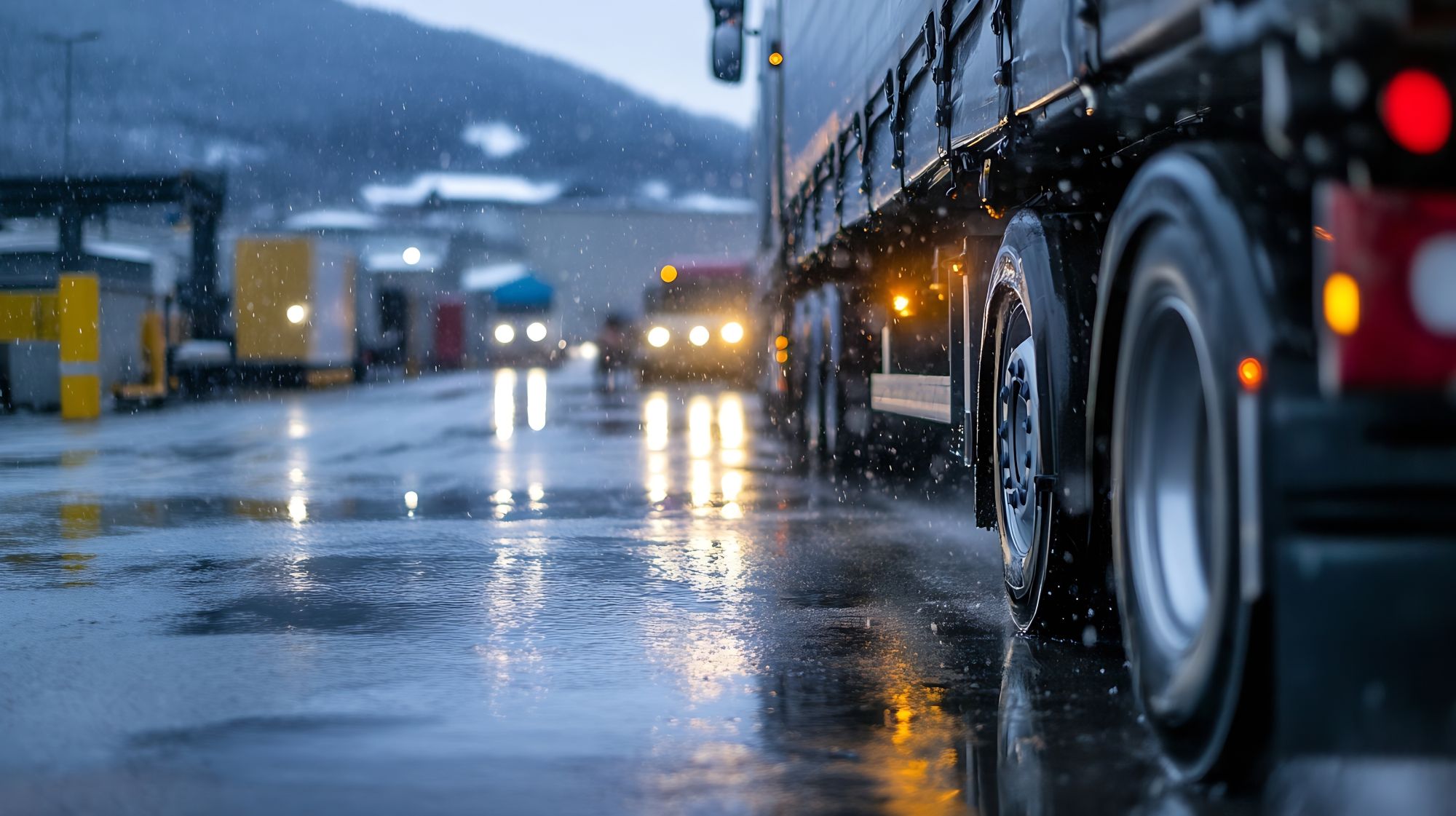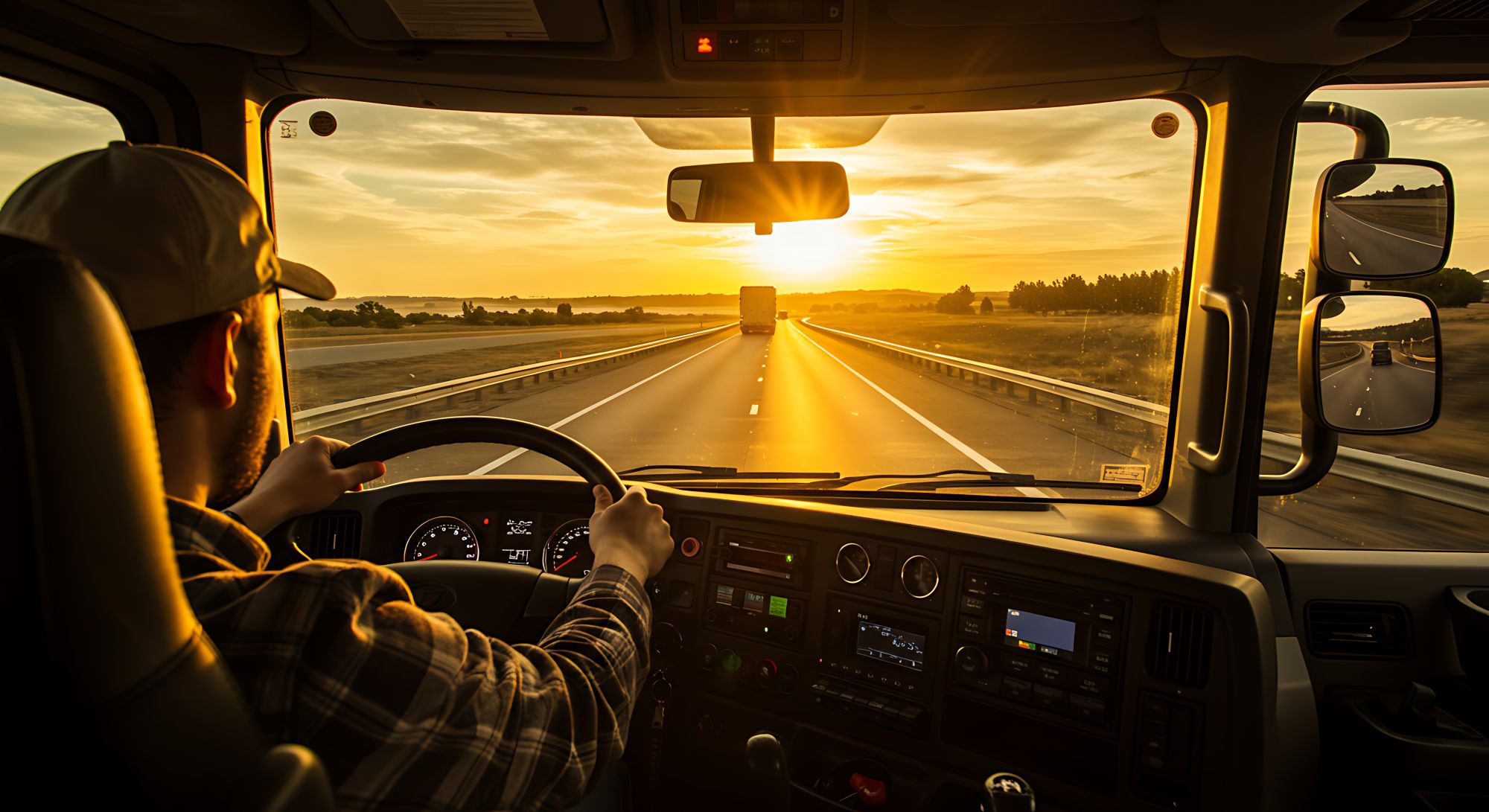
Guest
Como as alterações climáticas estão a afetar o sector da mobilidade
Criado: 21/07/2025
•
Atualizado: 21/07/2025
As alterações climáticas já não são um risco distante. Para quem trabalha no sector dos transportes rodoviários, é uma realidade operacional diária - uma realidade que se torna mais difícil de ignorar a cada ano que passa. Desde ondas de calor que derretem o alcatrão a inundações que cortam as principais rotas, o impacto de um clima em mudança está integrado na atividade de transporte de mercadorias.
Para os gestores de frotas, isto significa navegar pela evolução da regulamentação, atualizar as infra-estruturas e repensar o planeamento da continuidade. Para os condutores, significa adaptar-se a novos riscos na estrada - desde rebentamentos de pneus a janelas de entrega interrompidas. E para todo o sector, assinala a necessidade de uma abordagem à mobilidade mais resiliente e consciente do clima.
A perturbação meteorológica é uma ameaça operacional
Em julho de 2022, o Reino Unido experimentou seu dia mais quente já registrado. À medida que as temperaturas subiam para 40 ℃, as estradas começaram a amolecer, com secções da A14 fechadas devido à degradação da superfície. Os operadores de frotas foram forçados a redirecionar as entregas, por vezes com pouco tempo de antecedência, enquanto as temperaturas dos motores subiam e os veículos lutavam para manter o desempenho.
Nesse mesmo ano, os ventos fortes da Tempestade Eunice causaram danos generalizados em corredores de transporte de mercadorias na Europa Ocidental, capotando veículos de grande porte e danificando cargas sensíveis à temperatura. Entretanto, em janeiro de 2024, a tempestade Henk inundou vastas áreas do centro de Inglaterra. As principais estradas das Midlands ficaram intransitáveis e alguns condutores ficaram retidos durante horas.
Não se trata de factos isolados. São sinais de um sistema de transportes cada vez mais vulnerável às ameaças climáticas. O pavimento das estradas, os componentes dos veículos e as redes logísticas estão a ser testados por condições variáveis - e as consequências estão a fazer-se sentir em toda a cadeia de abastecimento.
Cadeias de abastecimento afectadas
Quando se trata de perturbações relacionadas com o clima, os impactos não se fazem sentir apenas em rotas individuais. Cadeias de abastecimento inteiras estão a ser afectadas - por vezes com pouco aviso. Nos Países Baixos, a subida do nível do mar e a precipitação mais intensa estão a levar as autoridades e as empresas a reavaliar a resiliência das infra-estruturas logísticas críticas, especialmente nas zonas industriais baixas.
O Porto de Roterdão - o maior porto marítimo da Europa - [tomou medidas activas] (https://www.c40.org/wp-content/uploads/2022/02/C40-Good-Practice-Guide-Climate-Change-Adaptation-in-Delta-Cities.pdf) para se adaptar aos riscos climáticos, reforçando os muros dos cais, elevando as estradas de acesso e melhorando os sistemas de águas pluviais para proteger contra inundações. Os centros logísticos interiores também estão a ser analisados, uma vez que as condições meteorológicas extremas expuseram vulnerabilidades nas vias de acesso e na drenagem.
Inovação nos transportes
A tecnologia das frotas está a melhorar rapidamente, especialmente no que diz respeito à eletrificação e ao diagnóstico inteligente. Mas as alterações climáticas estão a criar novas tensões mesmo para os veículos mais avançados. A eficiência da bateria pode cair até 20% em tempo frio, reduzindo a autonomia efectiva das carrinhas eléctricas. Entretanto, as temperaturas elevadas [aceleram a degradação dos pneus] (https://www.halfords.com/tyres/advice/tyre-pressure-in-weather.html) e exercem uma pressão adicional sobre os sistemas de arrefecimento dos veículos.
Para resolver estas questões, alguns operadores estão a investir em sistemas de manutenção preditiva que utilizam a telemática para antecipar o desgaste e programar reparações antes da ocorrência de falhas dispendiosas. Outros estão a atualizar os sistemas de conforto da cabina para proteger o bem-estar do condutor durante períodos de calor ou frio extremos. Apesar de estas alterações implicarem um investimento inicial, podem gerar dividendos em termos de tempo de atividade, segurança e retenção dos condutores.
O aumento do risco climático também está a remodelar os seguros. Algumas seguradoras estão a responder ao aumento da frequência de sinistros causados por condições meteorológicas extremas [aumentando os prémios] (https://www.insurtechinsights.com/abi-finds-extreme-weather-driving-record-claims-and-premium-increases/) e tornando as exclusões mais rigorosas. As apólices de interrupção de negócios, em particular, estão sob [maior escrutínio] (https://www.ratcliffes.co.uk/insights/climate-risk-business-preparation), especialmente quando as cadeias de fornecimento são vulneráveis a interrupções repetidas. E, embora o seguro de carga continue a ser considerado, nem todas as apólices cobrem automaticamente os atrasos causados por fenómenos climáticos como inundações ou ventos fortes.
Os gestores de frotas devem rever a sua cobertura à luz destes riscos emergentes. Isto significa verificar se existem exclusões, avaliar a forma como são definidos os eventos relacionados com o clima e garantir que as lacunas críticas - como o tempo de inatividade devido ao encerramento de estradas - são adequadamente abordadas. Em alguns casos, a demonstração de uma abordagem proactiva à gestão do risco, à atenuação das inundações e à formação dos condutores também pode ajudar a garantir condições mais favoráveis.

O panorama regulamentar
Embora os impactos físicos das alterações climáticas já sejam visíveis, as mudanças regulamentares estão a acrescentar outra camada de complexidade para os operadores. As zonas de baixas emissões estão a expandir-se rapidamente no Reino Unido e na Europa, colocando novas exigências à composição e conformidade da frota. Em Londres, a Zona de Emissões Ultra Baixas (ULEZ) continua a crescer, enquanto cidades como Birmingham e Oxford introduziram as suas próprias variações.
A nível europeu, os pacotes [Green Deal] (https://transport.ec.europa.eu/news-events/news/green-deal-greening-freight-more-economic-gain-less-environmental-impact-2023-07-11en#:~:text=The%20uptake%20of%20more%20aerodynamic,cube%20containers%20by%20standard%20vehicles.) e [Fit for 55] (https://commission.europa.eu/strategy-and-policy/priorities-2019-2024/european-green-deal/delivering-european-green-deal/fit-55-delivering-proposalsen#:~:text=Under%20the%20European%20Climate%20Law,cost%2Deffective%20and%20competitive%20way.) estabeleceram objectivos ambiciosos para a descarbonização. Os operadores de frotas estão a ser incentivados - e cada vez mais obrigados - a mudar para combustíveis e tecnologias mais limpos. Desde os mandatos de eletrificação às regras de transparência da cadeia de abastecimento, os operadores enfrentam agora uma nova base para o que é considerado uma prática comercial aceitável.
Para os gestores de frotas, estas alterações representam um desafio logístico e uma oportunidade estratégica. Adotar a sustentabilidade não se trata apenas de evitar penalizações - trata-se de preparar as operações para o futuro e manter-se à frente das novas expectativas dos clientes.
Construir operações resilientes
A adaptação não acontece de um dia para o outro, mas as mudanças graduais podem ter um impacto significativo. Alguns operadores estão agora a realizar avaliações de risco climático nas operações das suas frotas, identificando os activos e as rotas mais vulneráveis a perturbações. Outros estão a oferecer aos condutores formação actualizada para melhorar a segurança e a tomada de decisões durante fenómenos meteorológicos extremos.
As escolhas de combustível também estão a mudar. Os transportadores que procuram alternativas com menor teor de carbono estão a voltar-se para o HVO - óleo vegetal hidrotratado - uma alternativa ao gasóleo que reduz as emissões sem exigir novas infra-estruturas. Entretanto, aqueles que investem em software de otimização da carga estão a ver benefícios não só na economia de combustível, mas também nas reduções de emissões que apoiam os objectivos de conformidade.
Já não há dúvidas de que as alterações climáticas estão a moldar o futuro do transporte rodoviário, não daqui a décadas, mas agora mesmo. O desafio para os operadores é passar de uma mentalidade reactiva para uma mentalidade mais estratégica e de longo prazo. Isso significa compreender os riscos, atuar sobre eles atempadamente e reconhecer que a resiliência está a tornar-se rapidamente uma fonte de vantagem competitiva.
"Estamos a ouvir a mesma coisa dos operadores de frotas do Reino Unido e da Europa", afirma Nick Renton, Diretor de Estratégia Europeia e Desenvolvimento Comercial da SNAP. "A perturbação climática não é um risco futuro - já está aqui, afectando tudo, desde o armazenamento e o planeamento de rotas até ao bem-estar dos condutores. As frotas que prosperarem serão as que tratarem a resiliência climática como uma estratégia empresarial e não apenas como uma resposta de emergência.
"É importante porque o custo da inação está a aumentar - não só financeiramente, mas também em termos de entregas perdidas, tempo de inatividade operacional e bem-estar dos condutores na estrada. Se quisermos manter as mercadorias em movimento e as empresas em crescimento, temos de começar a criar essa resiliência desde já."
Na SNAP, trabalhamos em estreita colaboração com as frotas de todo o Reino Unido e da Europa para as ajudar a navegar nesta nova realidade. Quer seja através de conhecimentos, parcerias ou ferramentas mais inteligentes para operações na estrada, estamos aqui para apoiar aqueles que mantêm as rodas a girar - independentemente do tempo. [Registe-se hoje] (https://snapacc.com/sign-up/) para tirar partido das nossas soluções de gestão de frotas.



